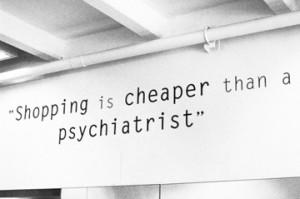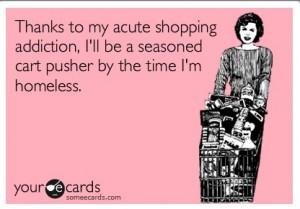While shopping and retail therapy can be a fun diversion – one that offers instant gratification and a few fun buys – there are also tremendous costs that come with the behavior. Unfortunately, it often isn’t until those costs add that many are able to recognize the need to make changes. Here are the top four reasons that buying clothing to cope may be costing you dearly.
Retail Therapy Cost #1 – You Don’t Have the Money for What You Really Need

When you spend money on purchases you don’t need, you don’t have money for the things you do need. Sure, you can argue that buying things on a whim ensures that your closet is full of clothes for anything that may come up, but, realistically, this isn’t true and you know it. Shopping as a form of retail therapy, or to cope, is usually done haphazardly and without any plan or order. Compare it to times when you’ve eaten food as a form of coping or dealing with your problems. Did you make healthy choices, did you pay attention to the calories you had consumed that day or how many carbs you had eaten? Of course you did not. In moments of stress and challenging times, the voice in your head tells you that you’ve earned that half a pizza or that gooey chocolate dessert at the end of a long day. The same is true for retail therapy. In a stressful moment, when shopping is used as a form of relief, choices are made to help make yourself feel better. The resulting purchases are often impractical and are made simply for the sake of buying something to lift your spirits. The more your bank account drains from impractical purchases, the less likely it will be that when the time comes, and you actually need something, you will have the money on hand to purchase it.
Retail Therapy Cost #2 – You Look Great but Have Nowhere to Go
Though retail therapy may give you tons of options for your closet, where are you going to wear them? People who suffer from shopping addiction, or use shopping for clothing as a form of therapy, may have the perfect outfit waiting in their closet but tend to have nowhere to wear it. By using retail therapy to ease your stress, you run the risk of becoming consumed by this pastime. In addition, people who don’t properly learn how to handle stressful times tend to check out on life simply because they haven’t learned healthy ways of coping. Friends fall by the wayside, enthusiasm for life wanes and they reach for quick pick-me-ups they can rely on, like retail therapy.
Retail Therapy Cost #3 – You Add More Stress to Your Life, Not Less
Poor coping mechanisms often exacerbate the stress that you are already dealing with. For example, emotional eaters tend to gain weight and create added pressure of more weight loss to their list of goals that already overwhelm them. People who engage in too much retail therapy run the risk of things like credit card debt, negative bank balances, zero savings and no retirement plan. Even if you are shopping within your means, it does not mean you can afford to be as frivolous with your money as you might think. Ten dollars here, fifty dollars there may seem like small amounts now, but I’m sure that the money could be better spent while also giving you a feeling of security.
Retail Therapy Cost #4 – Nothing is Really Solved

While it’s human to adapt coping mechanisms, like retail therapy, to help us handle hard times, and there is nothing wrong with the occasional indulgence, as long as we realize that it’s not going to solve anything. Retail therapy, emotional eating, watching too much tv, not being able to log off Facebook are all fine if we also recognize that our problems will still be there after we’ve logged off, brought that new dress home or finished licking our chocolate sundae spoon. If you feel bedraggled after a long day and want to pop into a store to shop, enter with the full understanding that you are doing something to feel better, not to solve anything. When life gets tough, sometimes taking a breather and doing something mindless or fun does have the ability to help us reset, to walk away from the issue for a few minutes and even clear our heads. Yet, it is only when we are cognizant of our behavior and can reign it in to something manageable that it remains a healthy way to deal with life’s inevitable stresses.
If you are dealing with a shopping addiction or feel that your shopping behavior has grown out of control, there are a few resources to consider:
Dr. April Benson of Stopping Overshopping, LLC, exists to alleviate the suffering, particularly to individuals, caused by compulsive buying.
My Year Without Clothes Shopping offers a suite of programs to help you look stylish and feel great every day while also enjoying the sense of freedom and self-esteem that comes with being in control of your shopping habits.
Also, listen to my interview with Dr. April Benson, Jill Chivers of My Year Without Clothes Shopping and expert Dr. David Tolin about shopping addiction here:
Listen to internet radio with BridgetteRaes on BlogTalkRadio
 Life can get hard. When it does we often find ways of coping. For some people it means devouring half the fridge, while for others it may mean spending too much time on Facebook or trying to get to the next level on Candy Crush Saga. Another way of coping with life’s ups and downs is through shopping or retail therapy.
Life can get hard. When it does we often find ways of coping. For some people it means devouring half the fridge, while for others it may mean spending too much time on Facebook or trying to get to the next level on Candy Crush Saga. Another way of coping with life’s ups and downs is through shopping or retail therapy.




